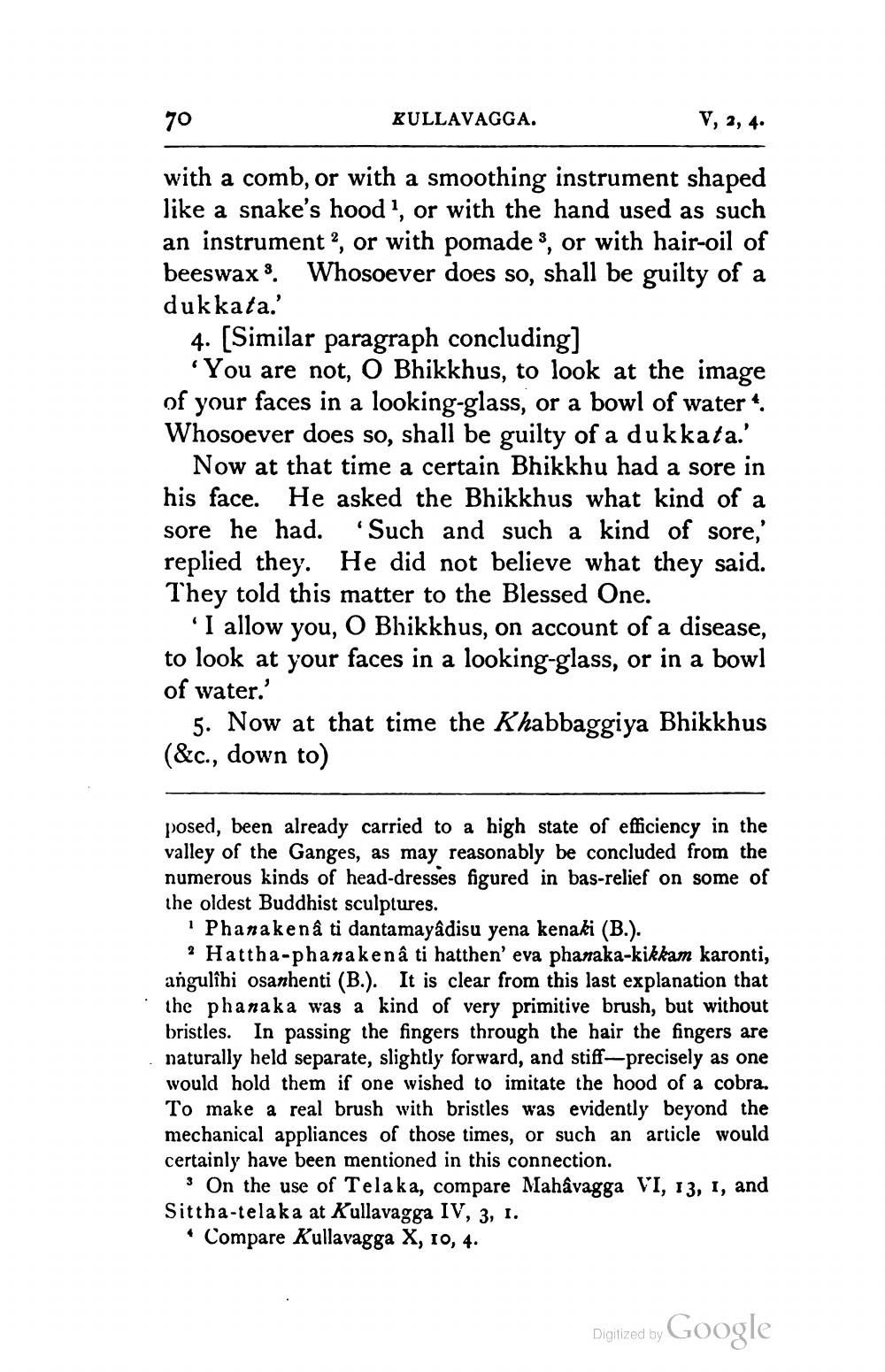________________
70
KULLAVAGGA.
V, 3, 4.
with a comb, or with a smoothing instrument shaped like a snake's hood', or with the hand used as such an instrument?, or with pomade 3, or with hair-oil of beeswax Whosoever does so, shall be guilty of a dukkata.' 4. (Similar paragraph concluding]
You are not, O Bhikkhus, to look at the image of your faces in a looking-glass, or a bowl of water 4: Whosoever does so, shall be guilty of a dukkata.'
Now at that time a certain Bhikkhu had a sore in his face. He asked the Bhikkhus what kind of a sore he had. 'Such and such a kind of sore,' replied they. He did not believe what they said. They told this matter to the Blessed One.
'I allow you, O Bhikkhus, on account of a disease, to look at your faces in a looking-glass, or in a bowl of water.'
5. Now at that time the Khabbaggiya Bhikkhus (&c., down to)
posed, been already carried to a high state of efficiency in the valley of the Ganges, as may reasonably be concluded from the numerous kinds of head-dresses figured in bas-relief on some of the oldest Buddhist sculptures.
I Phanakenâ ti dantamayâdisu yena kenaki (B.).
? Hattha-phanakenâ ti hatthen' eva phanaka-kikkam karonti, angulihi osanhenti (B.). It is clear from this last explanation that the phanaka was a kind of very primitive brush, but without bristles. In passing the fingers through the hair the fingers are naturally held separate, slightly forward, and stiff-precisely as one would hold them if one wished to imitate the hood of a cobra. To make a real brush with bristles was evidently beyond the mechanical appliances of those times, or such an article would certainly have been mentioned in this connection.
3 On the use of Telaka, compare Mahâvagga VI, 13, 1, and Sittha-telaka at Kullavagga IV, 3, I.
• Compare Kullavagga X, 10, 4.
Digitized by
Digized by Google




